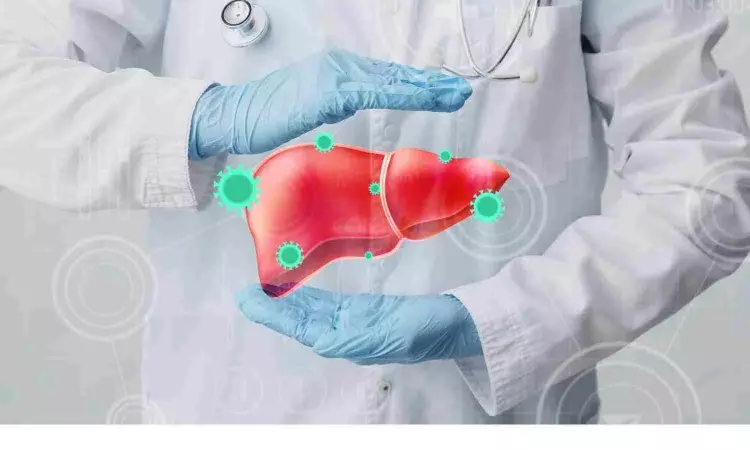- Home
- Medical news & Guidelines
- Anesthesiology
- Cardiology and CTVS
- Critical Care
- Dentistry
- Dermatology
- Diabetes and Endocrinology
- ENT
- Gastroenterology
- Medicine
- Nephrology
- Neurology
- Obstretics-Gynaecology
- Oncology
- Ophthalmology
- Orthopaedics
- Pediatrics-Neonatology
- Psychiatry
- Pulmonology
- Radiology
- Surgery
- Urology
- Laboratory Medicine
- Diet
- Nursing
- Paramedical
- Physiotherapy
- Health news
- Fact Check
- Bone Health Fact Check
- Brain Health Fact Check
- Cancer Related Fact Check
- Child Care Fact Check
- Dental and oral health fact check
- Diabetes and metabolic health fact check
- Diet and Nutrition Fact Check
- Eye and ENT Care Fact Check
- Fitness fact check
- Gut health fact check
- Heart health fact check
- Kidney health fact check
- Medical education fact check
- Men's health fact check
- Respiratory fact check
- Skin and hair care fact check
- Vaccine and Immunization fact check
- Women's health fact check
- AYUSH
- State News
- Andaman and Nicobar Islands
- Andhra Pradesh
- Arunachal Pradesh
- Assam
- Bihar
- Chandigarh
- Chattisgarh
- Dadra and Nagar Haveli
- Daman and Diu
- Delhi
- Goa
- Gujarat
- Haryana
- Himachal Pradesh
- Jammu & Kashmir
- Jharkhand
- Karnataka
- Kerala
- Ladakh
- Lakshadweep
- Madhya Pradesh
- Maharashtra
- Manipur
- Meghalaya
- Mizoram
- Nagaland
- Odisha
- Puducherry
- Punjab
- Rajasthan
- Sikkim
- Tamil Nadu
- Telangana
- Tripura
- Uttar Pradesh
- Uttrakhand
- West Bengal
- Medical Education
- Industry
VCTE-based scores can accurately predict liver-related events in MASLD patients: JAMA

China: A cohort study of 16 603 patients with metabolic dysfunction-associated steatotic liver disease (MASLD) who underwent vibration-controlled transient elastography (VCTE) examination showed VCTE-based scores to be accurate for predicting liver-related events.
The findings, published in the Journal of the American Medical Association (JAMA), suggest VCTE-based scores are a suitable alternative to liver biopsy in routine clinical practice and phase 2b and 3 clinical trials for steatohepatitis.
"The VCTE-based scores outperformed most noninvasive tests and were at least comparable if not better than histologic fibrosis staging in predicting liver-related events," the researchers reported. "On repeated testing, the scores were largely stable, and there was a substantial reduction in the risk of liver-related events in patients with improved scores."
Currently, MASLD is the most common chronic liver disease worldwide. Therefore, developing noninvasive tests to assess the disease severity and prognosis is important. Considering this, Huapeng Lin, The Chinese University of Hong Kong, Hong Kong, China, and colleagues aimed to study the prognostic implications of baseline levels and dynamic changes of the VCTE–based scores developed for the diagnosis of advanced fibrosis (Agile 3+) and cirrhosis (Agile 4) in patients with MASLD.
The study included data from a natural history cohort of MASLD patients who underwent VCTE examination at 16 tertiary referral centers in Europe, the US, and Asia from 2004 to 2023, of which the prospective collection of data was done at 14 centers.
The study included adults aged at least 18 years with hepatic steatosis diagnosed by imaging studies (computed tomography, ultrasonography, or magnetic resonance imaging, or controlled attenuation parameter ≥248 dB/m by VCTE) or histologic methods (steatosis in ≥5% of hepatocytes).
The primary outcomes were liver-related events (LREs), denied as hepatocellular carcinoma or hepatic decompensation (variceal hemorrhage, ascites, hepatorenal syndrome, or hepatic encephalopathy), liver-related deaths, and liver transplants. The Agile scores were compared with histologic and eight other noninvasive tests.
The researchers reported the following findings:
- A total of 16 603 patients underwent VCTE examination at baseline (mean age, 52.5 years; 57.8% were male). At a median follow-up of 51.7 months, 1.9% developed LREs.
- Agile 3+ and Agile 4 scores classified fewer patients between the low and high cutoffs than most fibrosis scores and achieved the highest discriminatory power in predicting LREs (integrated area under the time-dependent receiver-operating characteristic curve, 0.89).
- 65.8% of patients had repeated VCTE examination at a median interval of 15 months and were included in the serial analysis.
- 81.9% of patients had stable Agile 3+ scores, and 92.6% of patients had stable Agile 4 scores (same risk categories at both assessments).
- The incidence of LREs was 0.6 per 1000 person-years in patients with persistently low Agile 3+ scores and 30.1 per 1000 person-years in patients with persistently high Agile 3+ scores.
- In patients with a high Agile 3+ score at baseline, a decrease in the score by more than 20% was associated with a substantial reduction in the risk of LREs.
- A similar trend was observed for the Agile 4 score, although it missed more LREs in the low-risk group.
In conclusion, the findings suggest that single or serial Agile scores are highly accurate in predicting liver-related events in patients with MASLD, making them suitable alternatives to liver biopsy in routine clinical practice and phase 2b and 3 clinical trials for steatohepatitis.
Reference:
Lin H, Lee HW, Yip TC, et al. Vibration-Controlled Transient Elastography Scores to Predict Liver-Related Events in Steatotic Liver Disease. JAMA. Published online March 21, 2024. doi:10.1001/jama.2024.1447
Dr Kamal Kant Kohli-MBBS, DTCD- a chest specialist with more than 30 years of practice and a flair for writing clinical articles, Dr Kamal Kant Kohli joined Medical Dialogues as a Chief Editor of Medical News. Besides writing articles, as an editor, he proofreads and verifies all the medical content published on Medical Dialogues including those coming from journals, studies,medical conferences,guidelines etc. Email: drkohli@medicaldialogues.in. Contact no. 011-43720751


